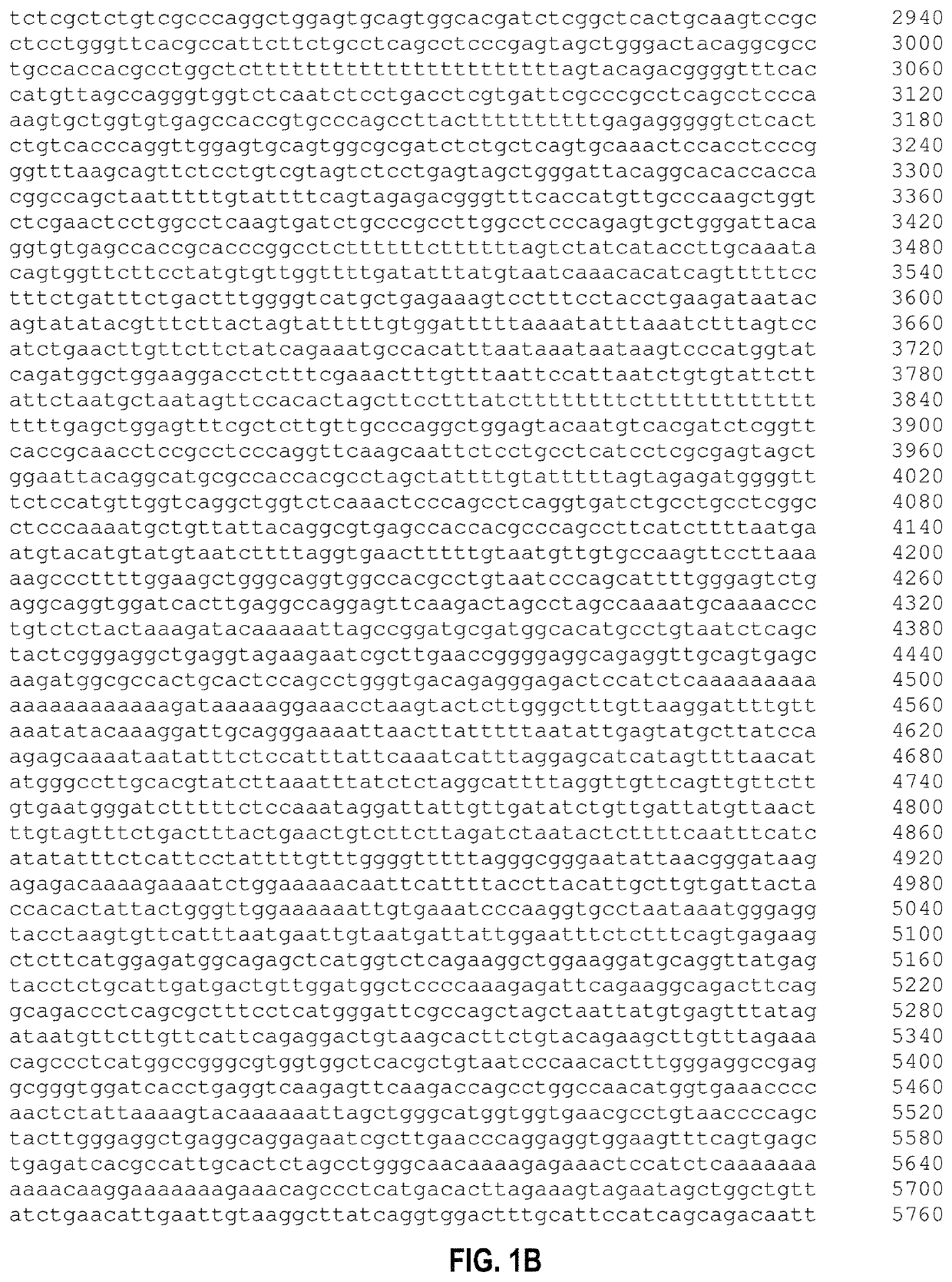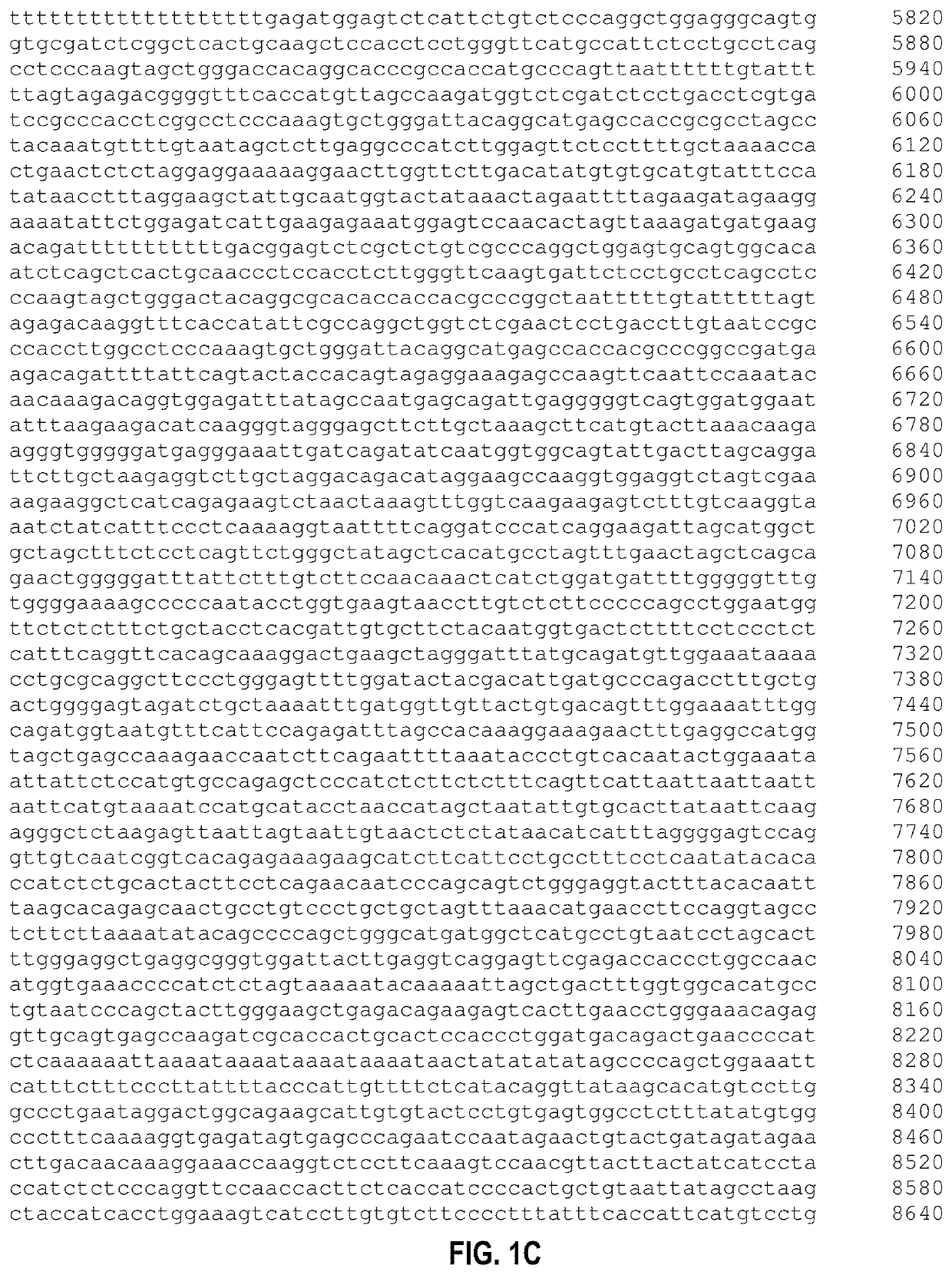Methods of treating fabry disease in patients having the G9331A mutation in the GLA gene
a technology of fabry disease and gla gene, which is applied in the field of pharmacological chaperones for the treatment of fabry disease, can solve the problems of reducing its stability, preventing it from folding properly, and affecting cellular function, and achieves the effect of enhancing -galactosidas
- Summary
- Abstract
- Description
- Claims
- Application Information
AI Technical Summary
Benefits of technology
Problems solved by technology
Method used
Image
Examples
example 1
DGJ on G9331A Mutation
[0091]The effect of DGJ in a male Fabry lymphoblast line with confirmed presence of the G9331A GLA mutation was studied to determine the magnitude and EC50 values. G9331A or normal human (positive control) lymphoblasts were seeded at 25,000 cells per well (in 96-well plates). The lymphoblasts were then incubated±DGJ (10-point concentration-response curves) for 5 days. The concentration range for both cell lines was 5 nM to 100 μM. The α-Gal A activity in cell lysates was measured using the 4-MUG synthetic fluorogenic substrate. Maximum levels in the presence of DGJ are defined as the top of the sigmoidal concentration-response curve. It was then determined if α-Gal A levels were increased in response to DGJ. Enzyme assay results were confirmed by western blot.
[0092]FIGS. 4 and 5 show representative α-Gal A activity data in mutant and normal lymphoblasts, respectively. As seen in the figures, both the G9331A and normal positive control lymphoblasts show concentr...
example 2
[0097]The presence of G9331A was confirmed in the cell line by sequencing. A 1000-bp fragment surrounding the site of the IVS4+919G→A mutation was PCR amplified from genomic DNA isolated from the mutant (tested two different cultures) or normal human lymphoblasts (wild-type). Each fragment was sequenced (Genewiz), and the presence of the IVS4+919G→A mutation was confirmed in both lots of G9331A cells whereas the wild-type sequence was confirmed in the normal cells.
example 3
ion of Absence of Wild-Type GLA in G9331 Lymphoblasts
[0098]Next, it was verified that the wild-type GLA gene is not present in the tested mutant lymphoblasts. Three separate strategies were used to demonstrate that the wild-type GLA gene is not present in the G9331A lymphoblasts. In all three strategies, G9331A lymphoblast samples were compared to those of wild-type lymphoblasts and a 1:1 G9331A :wild-type mixture. Samples from wild-type lymphoblasts were used as a control to show that the method is sensitive for detection of the pure wild-type gene. Samples from the mixture of mutant and wild-type lymphoblasts were used as a control to show that the method is sensitive for detection of the wild-type gene at a level expected from a heterozygous female (because no female G9331A lymphoblasts are available)
[0099]Strategy 1: PCR Amplification of a Y Chromosome-Specific Gene
[0100]Under this strategy, absence of wild-type GLA is confirmed if the cell line is from a male. If the cell line ...
PUM
| Property | Measurement | Unit |
|---|---|---|
| stability | aaaaa | aaaaa |
| stable | aaaaa | aaaaa |
| α- | aaaaa | aaaaa |
Abstract
Description
Claims
Application Information
 Login to View More
Login to View More - R&D
- Intellectual Property
- Life Sciences
- Materials
- Tech Scout
- Unparalleled Data Quality
- Higher Quality Content
- 60% Fewer Hallucinations
Browse by: Latest US Patents, China's latest patents, Technical Efficacy Thesaurus, Application Domain, Technology Topic, Popular Technical Reports.
© 2025 PatSnap. All rights reserved.Legal|Privacy policy|Modern Slavery Act Transparency Statement|Sitemap|About US| Contact US: help@patsnap.com



